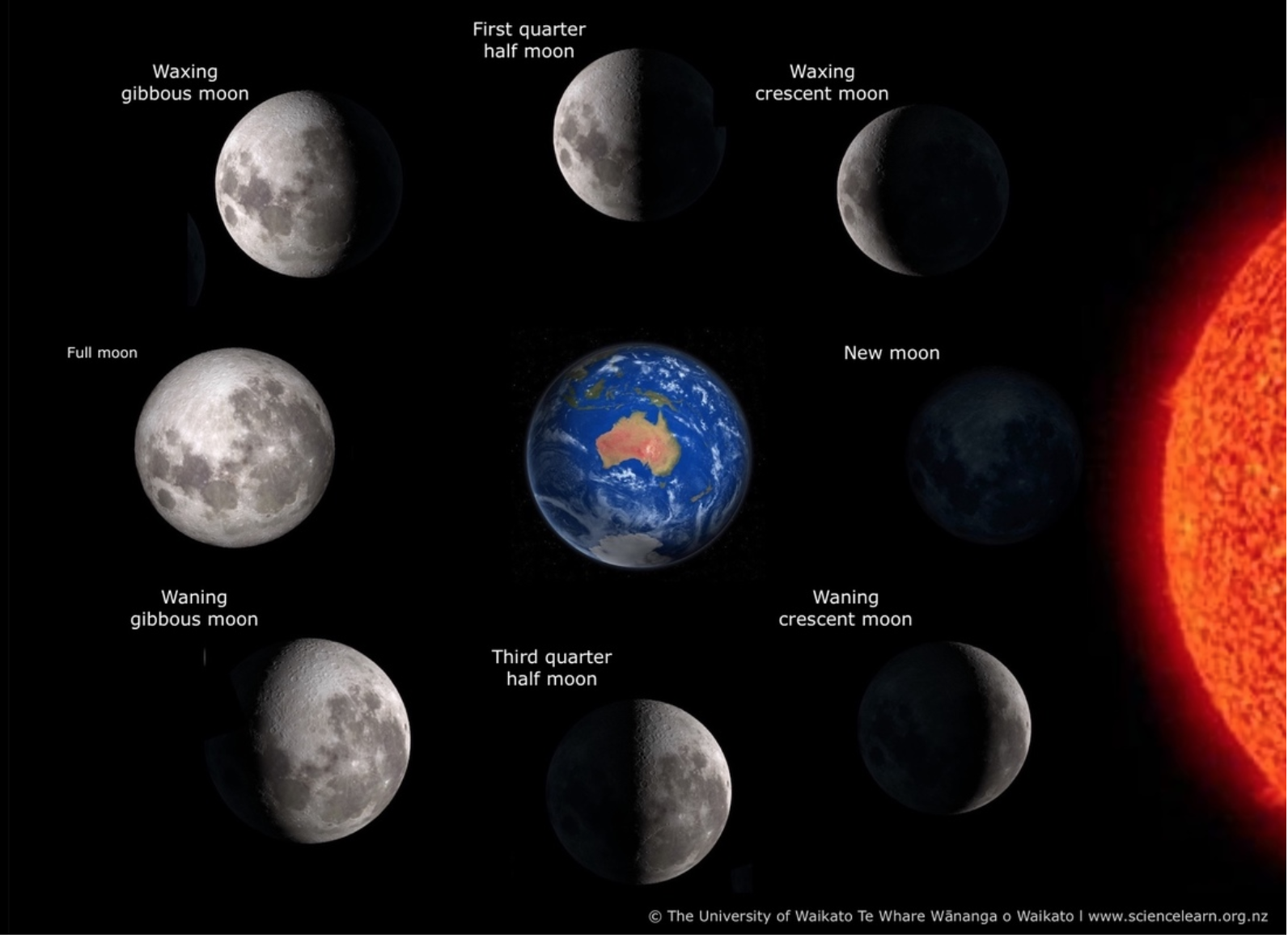The Moon And Its Phases!
Have you ever wondered why there is still light outside during the night? This is because the sky is lit up by the stars and our surroundings are illuminated by the moonlight. The moon is Earth’s natural satellite and has craters, dust, volcanic rock, and debris. But how does the moon produce light if it's not a star like the sun?
The answer is pretty simple: the moon is reflecting the light from the sun. However, we are not able to see the sun during the night, so how is this possible? When you see the moon at night, the side of the Earth you are on is not facing the sun. The sun shines on the other side of the Earth and the side of the moon that is facing the half of the Earth in darkness; this way light is reflected from the moon to the Earth. Although the moon seems to shine very brightly during the night, it only reflects between 3 and 12 percent of the sunlight that hits it.
From our perspective, it might seem like the moon is changing shape each night (turning from a crescent to a half moon to a full moon and back again). However, what is actually happening is that we see different parts of the moon lit up by the sun.
As the moon travels around the Earth, different parts are hit with sunlight. The changes in the moon’s appearance from our point of view are called moon phases. The moon goes through eight moon phases as it completes its orbit of Earth about every four weeks: New moon, waxing crescent, first quarter, waxing Gibbous, full moon, waning Gibbous, Third Quarter, and Waning Crescent. The new moon occurs when the moon is between the Earth and sun, meaning the half that we see of the moon is dark. During a full moon, the Earth, moon, and sun are aligned similar to the new moon, but the Earth is in the middle of the moon and sun. This way the entire sunlit part of the moon is facing us. The first and third quarter moons happen when the moon is perpendicular to the Earth with respect to the sun. These four moon phases are key in visualizing the moon phases.
The waxing crescent happens after the new moon, where the sunlit portion increases but is still less than half of the moon. After the first quarter, the sunlit part of the moon increases but is now more than half, so it is waxing gibbous. The waning gibbous occurs after the full moon where the light starts to decease. Following the third quarter moon is the waning crescent, which wanes until the light is completely gone, turning into a new moon.
Moon phases
Picture Source: Sciencelearn.org.nz

